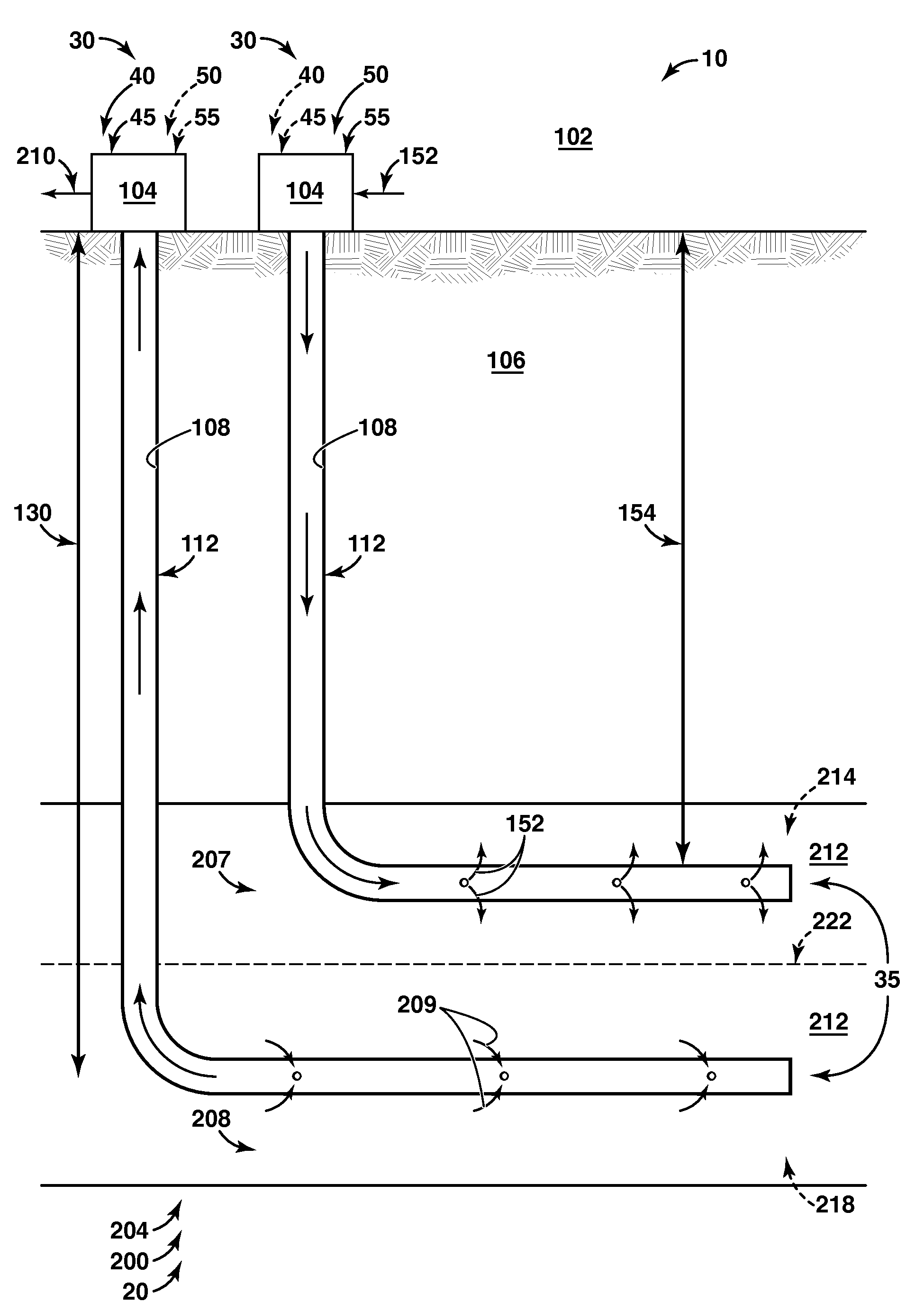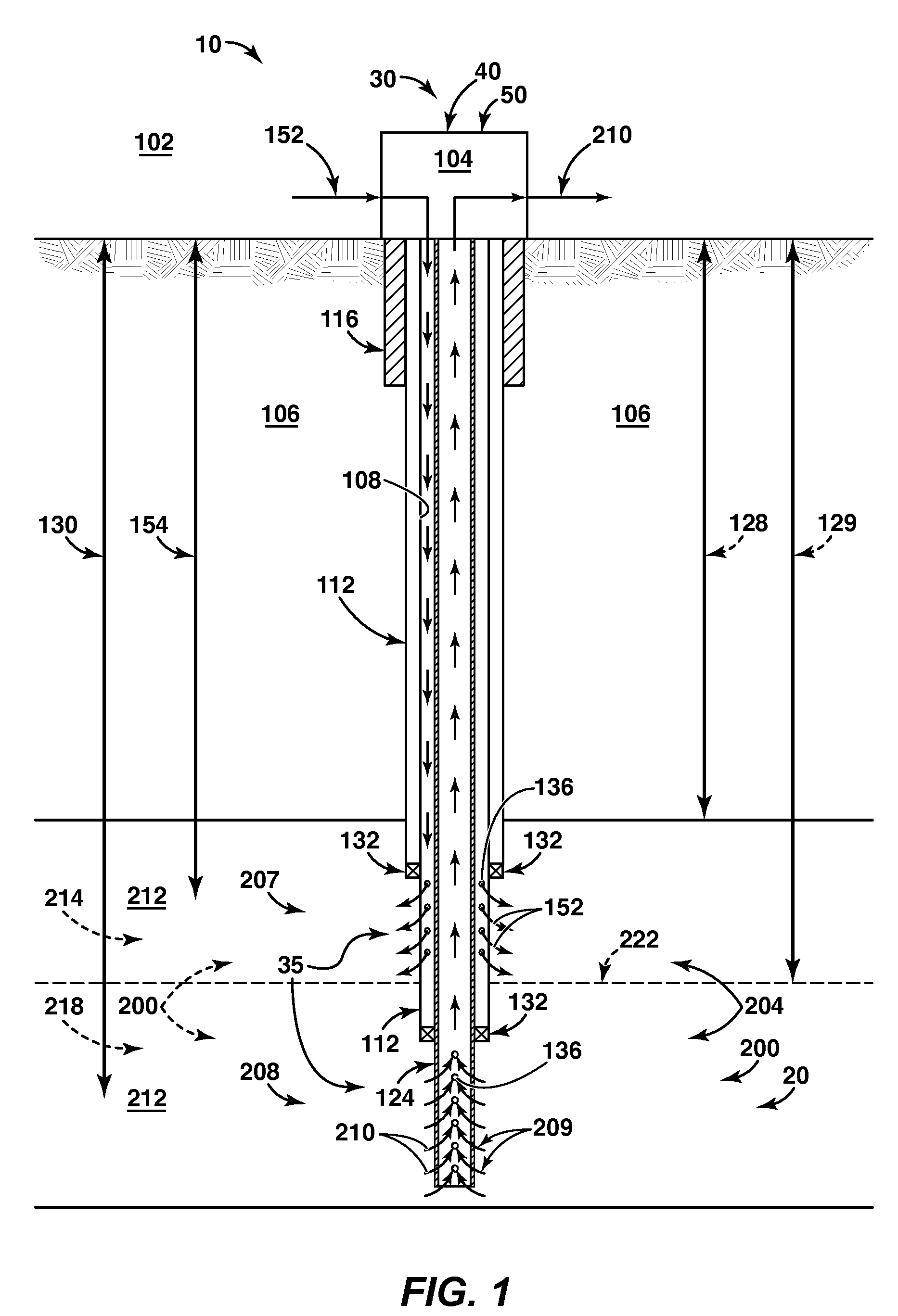Systems and Methods For Hydraulic Barrier Formation To Improve Sweep Efficiency In Subterranean Oil Reservoirs
a technology of hydraulic barrier and oil reservoir, which is applied in the direction of fluid removal, fluid removal, borehole/well accessories, etc., can solve the problems of increased costs associated with drilling additional wells, difficulty in optimal placement of blocking agents, and difficulty in removing oil contained within the low permeability region of the reservoir without improvement of standard oil recovery techniques. , to achieve the effect of improving the efficiency of reservoir sweep and increasing the resistance to liquid flow
- Summary
- Abstract
- Description
- Claims
- Application Information
AI Technical Summary
Benefits of technology
Problems solved by technology
Method used
Image
Examples
Embodiment Construction
[0018]The present disclosure is directed to systems and methods for creating a hydraulic barrier between high and low permeability regions that may exist in high permeability-contrast subterranean reservoirs of subsurface formations. As discussed in more detail herein, these systems and methods may include providing injection and / or production wells that are completed within the high and / or low permeability regions of the subterranean reservoir; supplying a pore throat blocking agent to an interface between the high and low permeability regions; and forming the hydraulic barrier at the interface between high and low permeability regions. As further discussed herein, the pore throat blocking agent may be sized to substantially flow through the high permeability region while being substantially blocked, or occluded, from the low permeability region.
[0019]In some embodiments, the subsurface formation may include a subterranean oil reservoir, and the systems and methods may include impr...
PUM
 Login to View More
Login to View More Abstract
Description
Claims
Application Information
 Login to View More
Login to View More - R&D
- Intellectual Property
- Life Sciences
- Materials
- Tech Scout
- Unparalleled Data Quality
- Higher Quality Content
- 60% Fewer Hallucinations
Browse by: Latest US Patents, China's latest patents, Technical Efficacy Thesaurus, Application Domain, Technology Topic, Popular Technical Reports.
© 2025 PatSnap. All rights reserved.Legal|Privacy policy|Modern Slavery Act Transparency Statement|Sitemap|About US| Contact US: help@patsnap.com



